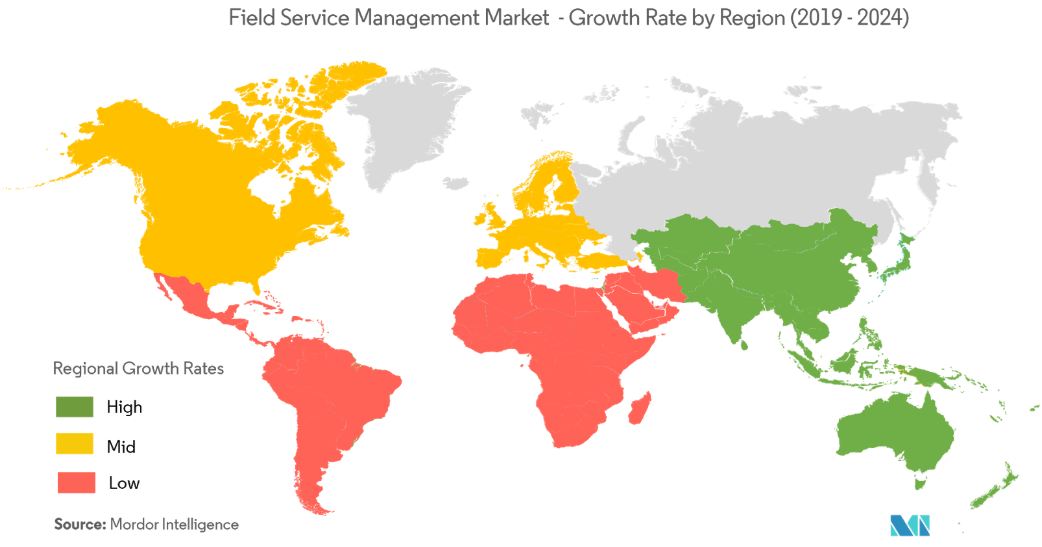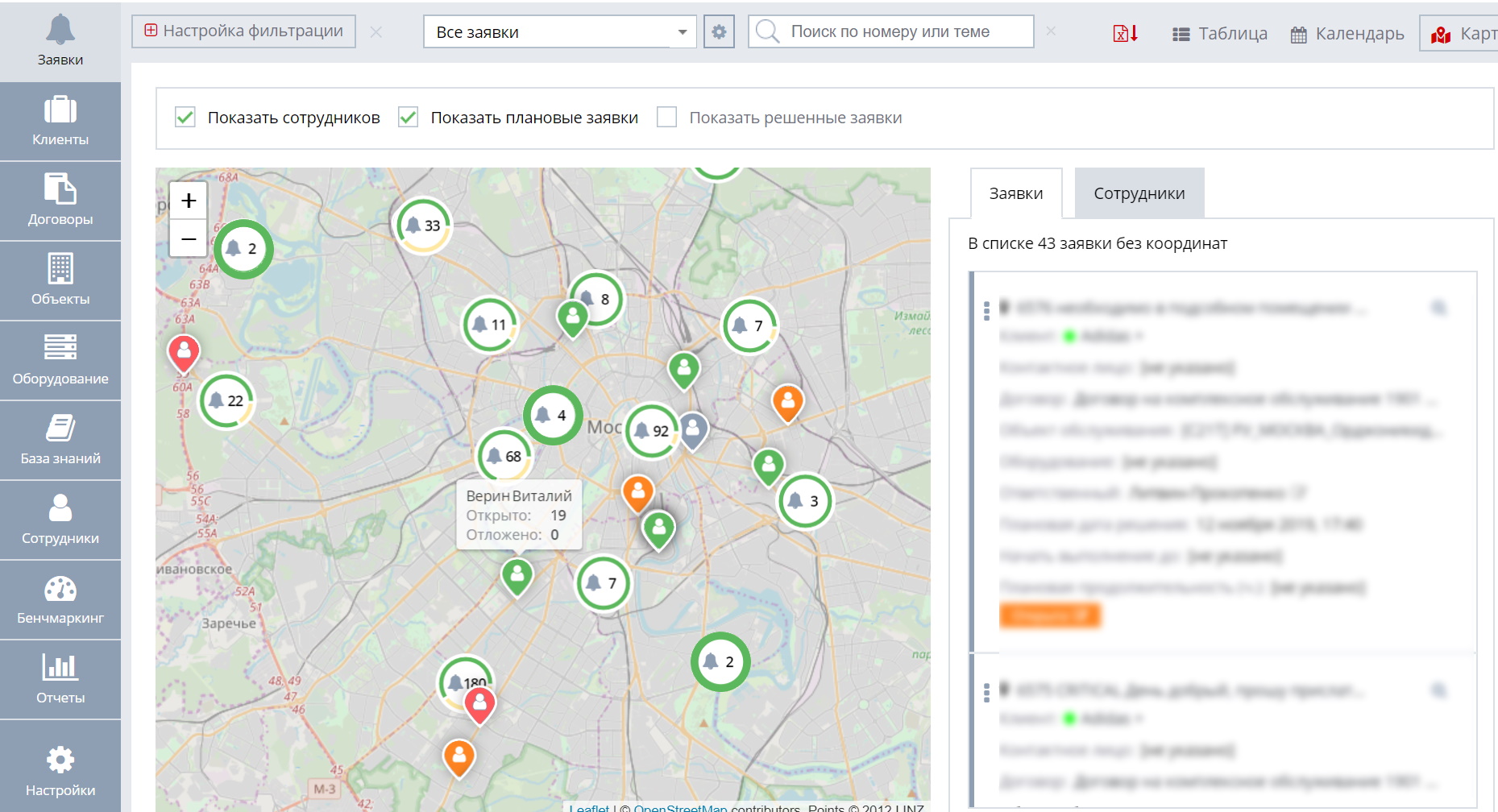Field Service Management or have matured in Russia to the management of field service engineers?

Field service. Prerequisites for the development of the outsourcing industry
Ten years ago, IT noted a trend toward consumerization, when sophisticated technologies become available to a simple layman, who does not have to thoroughly understand the principles of their work. Let us recall the same smartphones … On the one hand, this opens up enormous opportunities for ordinary business or private individuals, on the other, it complicates his life, because sometimes the iPhone breaks down and you can’t get it to work without a specialist.
Today, consumerization to one degree or another has touched a wide variety of industries. Naturally, she goes to business. Somewhere under the pressure of competition from major players, and somewhere at the request of the regulator, complex technical solutions penetrate everyday life. You don’t have to go far for an example: in our country, online cash desks, which are being introduced in stages for almost the entire business. In logistics, a similar story with tachographs and GLONASS monitoring.
In large cities, it is already difficult to go to a cafe, drive by transport or send goods without using any digital services or specialized equipment. From the point of view of the business implementing such solutions, this allows us to optimize processes and compete with larger federal players.
Technical improvements give a new impetus to the development of companies, but inevitably require maintenance. And more often it is more profitable to give this service to the side, rather than looking for a specialized, sometimes not cheap, specialist in the staff. This is the so-called “service economy”, which has taken root well in transport and in the IT segment, and now covers other industries.
Applicability of Field Service Management or what are field specialists serving today?

In almost every segment of the business, there are specialized solutions that are not so easy to maintain on their own.
By transport:
- geolocation equipment – GPS / GLONASS;
- telematics and infrastructure of sharing services (scooters, bicycles and infrastructure around them);
- payment terminals.
In offices and warehouses:
- ACS;
- surveillance cameras;
- elements of smart office / warehouse;
- engineering equipment of the building;
- coffee machines.
In retail and catering:
- online cash desks;
- payment terminals;
- 3D scanners;
- self-service kiosks, etc.
In education:
- modern equipment purchased under state programs (3D printers, interactive panels, robots, etc.).
In everyday life:
- elevators and intercoms;
- smart traffic lights and speed cameras;
- postamates;
- vending machines;
- automatic queues at the MFC.
To accompany all of the equipment listed, specially trained personnel are needed, which are not so cheap on the labor market – in the case of small and medium-sized businesses it is more profitable to outsource this task.
Such an economy pushes the development of the market for these services.
Already, the global Field Service Management market is valued at $ 2.8 billion. According to forecasts by MarketsandMarkets by 2024, it will grow by more than 2 times – up to 5.9 billion US dollarswhile maintaining tremendous potential for growth.
A significant share in these figures belongs to the United States – a country that has long passed to the so-called service economy. Most of the non-core tasks here are outsourced. Even private households do not try, as in our country, to do everything on their own, but call lawn mowers, cleaners and other professionals. There is no need to talk about business – their demand is fueled by a constant desire to increase profitability by reducing overhead costs.
Most of the working-age population in the United States is engaged in service (84% were already in 2010), thus generating more than 80% of GDP. And this market continues to grow.
An even greater growth in outsourcing is observed in the Asia-Pacific region, and China is leading here with a whole "army" of small and medium-sized companies.

Field Service Management. What are the difficulties of field service?
Field service is not just phone support. One of the main tasks within this type of service is the planning of visits to the facilities where the supported infrastructure is located.
Departures can be both urgent and scheduled – due to service maintenance of the infrastructure. A good example is the regular inspection of elevators, the rejection of which may turn out to be a very real prison term for the management of a service company.
Departures it is necessary to plan taking into account the workload and location of specialists in order to optimize the movement of the service department around the city.
And in order not to demand every day that employees return to the office to complete all the papers, it’s better provide them with fully functional mobile tools for fixing results and getting new tasks.
Field service is described by a rather complex model. On the one hand, the equipment serviced is associated with customers who may or may not renew the contract – such moments must be monitored so as not to do work for free. On the other hand, each type of equipment or type of application requires a specific set of operations and specific actions, i.e. checklists for specialists who help you not to get confused in the required actions.

As a result, it is quite difficult to fully automate field service, especially for medium and small businesses. Of course, many begin automation with the "implementation" of instant messengers or the simplest ticket systems. However, if you deal with the specifics of the processes, it becomes clear that the "ticket" or the ordinary Help Desk system can not do here. We need more specialized solutions to help solve the above problems and, for example, to associate with each application a specific unit of equipment being serviced (and at the same time a contract with a client for which this unit of equipment is serviced).
Field Service Management systems or how to automate field service?
HelpDesk solutions are often used to record field service. But most of them simply do not have the required functionality, since they are focused on the automation of other issues.
Most of these help desks provide ITIL service automation, i.e. in fact, they are focused on “internal” automation, completely forgetting about logistics and the specifics described above.
Another large class of solutions is focused on B2C support, where there are many customers and they are not personalized (“support for anonymous”). This is a completely different market. Third help desks are CRM systems in general, which have nothing to do with the automation of service and after-sales services.
Details about the difference between Help Desk and CRM and the classification of Help Desk systems on the market.
And only a relatively small proportion of solutions are really designed for field work in the B2B market. Naturally, such decisions are developing mainly in the West, where the market is larger and the pace of its development promises notable profits. Capterra, for example, includes more than 330 different products and services in the class of FSM solutions. But unlike the market of Helpdesk-systems, the market of FSM-solutions has not yet gone through all stages of development before consolidation.

For a long time in Russia, for many reasons, there were no systems that could be fully attributed to automation solutions for field service management. That is why, basically, we have known Enterprise solutions, which, both in price and in functionality, are focused on large businesses. For example, Inceptum Field Services Management, which is promoted by IBM, or SAP Field Service Management (curiously, none of the major solutions in the market dominates). These tools have many functions – from analytics to managing stocks of spare parts in warehouses, but their cost is such that they are simply not available to small and medium-sized businesses. But the tools aimed specifically at small and medium-sized businesses in our country began to develop recently – they can be counted on the fingers.
Field Service Automation
Having worked with Krupnyak for more than 10 years and in developing Service Desk solutions for the Enterprise segment, a few years ago we launched the development of the cloud Help Desk solutions (called Okdesk) for automating service and after-sales services in small and medium-sized service businesses. How we develop the product and how we saw Help Desk “for servicemen” a couple of years ago can be read on our blog.
Today, Okdesk is not just a Help Desk to automate all aspects of service and after-sales service. Today, Okdesk is a complete solution for automating Field Service Management or field service.

Our solution has all the blocks necessary for this:
- interaction with customers (CRM block, including the module for accounting contracts / service periods);
- accounting of service facilities (it can be a location or office, or it can be a vehicle or a website) and hardware and software, which is actually being serviced;
- incident service and work outside the scope of the contract (price list);
- regulatory applications and PPR associated with serviced equipment;
- the calendar presentation necessary for the correct planning of visits, taking into account the planned duration of work;
- full-featured mobile application of the engineer, as well as mobile applications for applicants (as well as 8 other channels for registering applications and interacting with the support service, including Telegram and WA bots);
- geolocation and a module unique to the market (we recently wrote about it from the technical side) of the distribution of applications on the map to the nearest, including planned future applications.
Okdesk also has integrations with dozens of systems (some of them are very “narrow” and really unique in the market), comparable in capabilities and flexibility with Enterprise configuration solutions (processes, SLA, routing, role and attribute model, API, etc. ), a modern interface with fast response, bombing support (you still, despite ~ 500 active Okdesk subscribers, you won’t find any negative reviews) and much more.
All this, of course, is “seasoned” with the most active development among all Help Desk / Service Desk solutions in the Russian Federation and the CIS.
Therefore, if you are looking for a solution to automate service and after-sales field service, come to us for a “trial”. We welcome your comments and suggestions!





